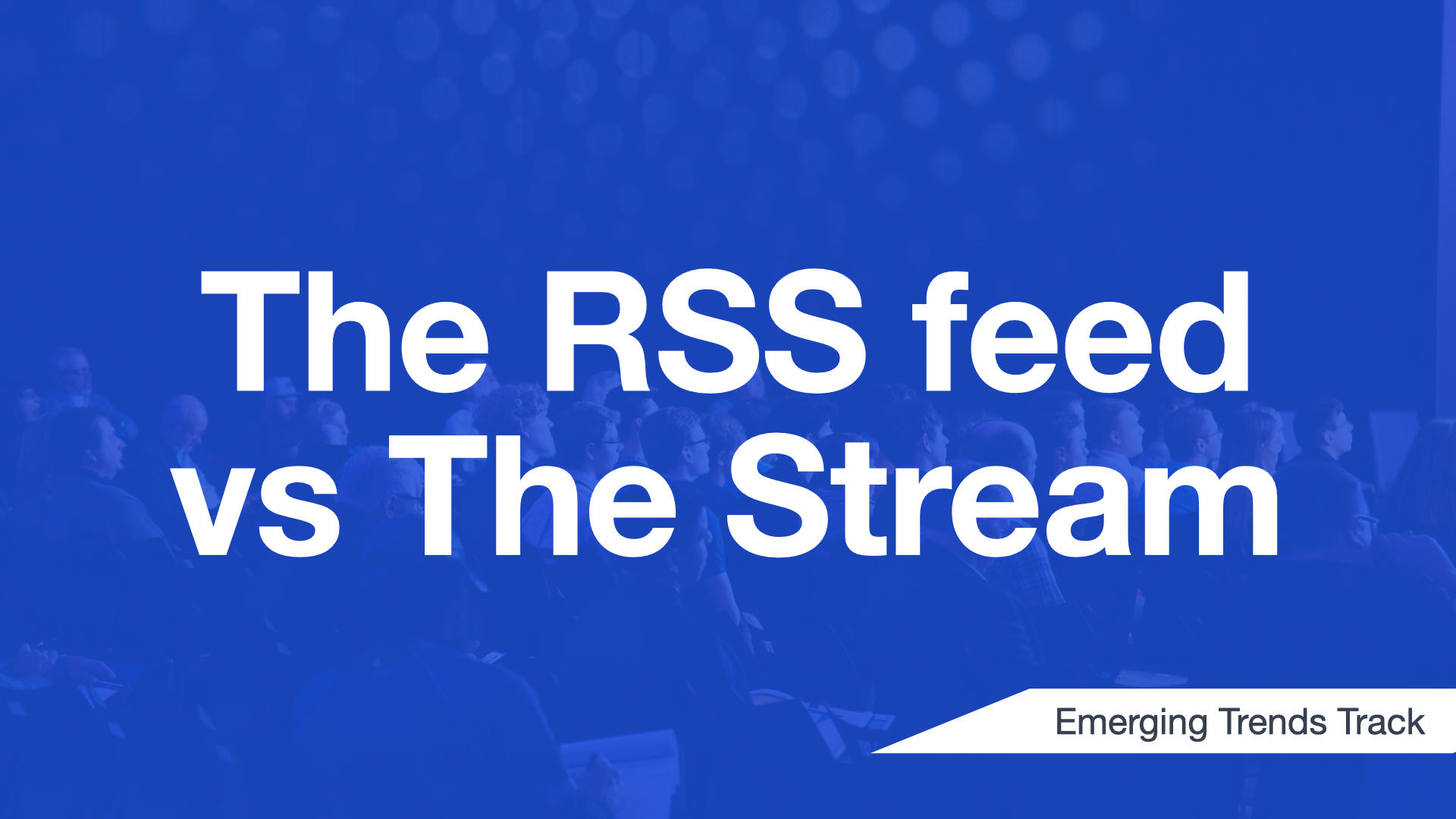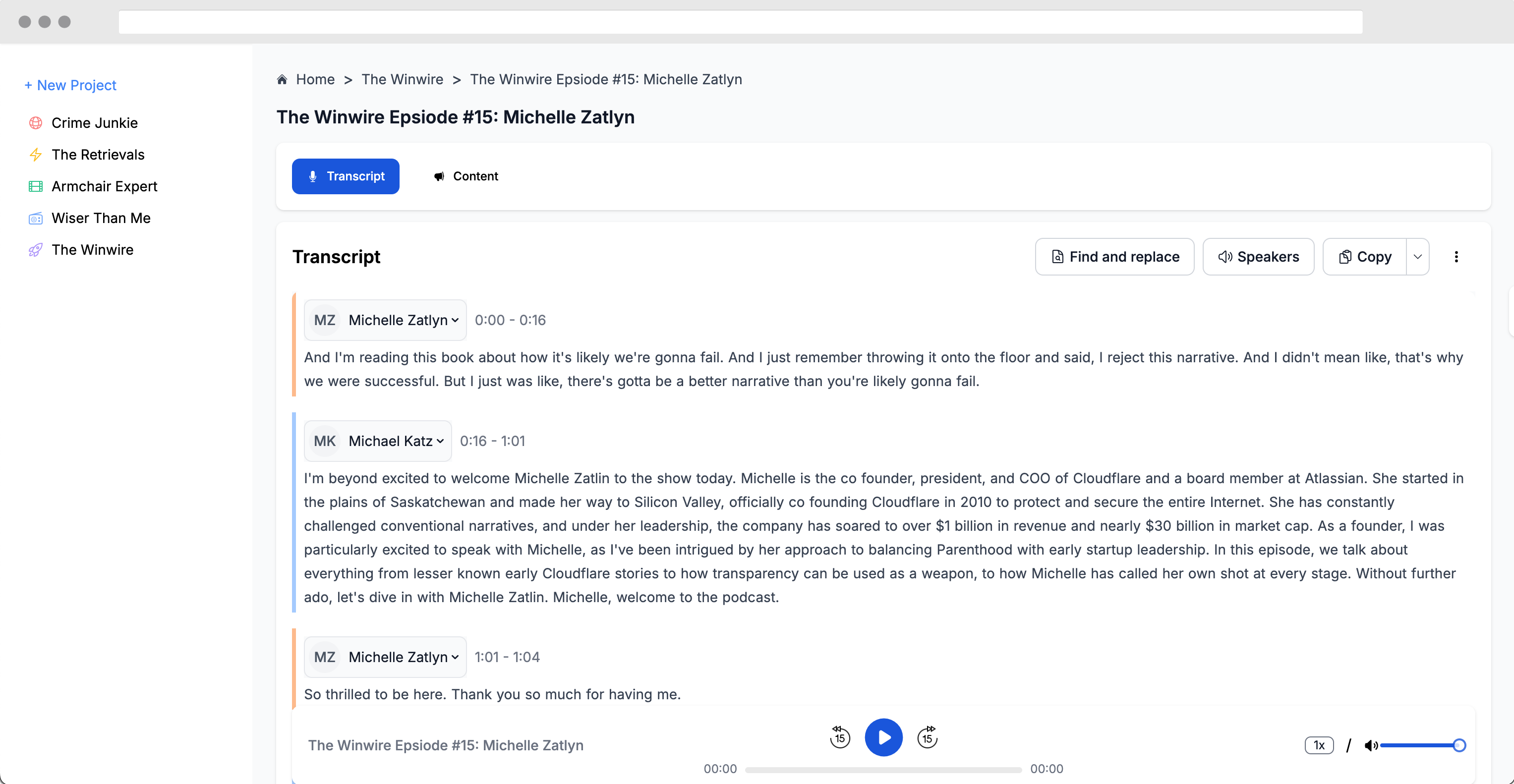The RSS feed vs The Stream

Key Takeaways
RSS vs. Streaming: RSS feeds offer broad distribution and accessibility, while streaming platforms provide better monetization and data privacy. Understanding the strengths and limitations of each can help podcasters choose the right method for their content.
Short Form vs. Long Form Content: Short form content, like social media clips, helps in gaining visibility, whereas long form content, such as full podcast episodes, is essential for monetization. Balancing both types is crucial for success.
Integration of RSS and Streaming: Combining RSS feeds with streaming platforms can maximize both distribution and real-time engagement. This hybrid approach can help podcasters reach a wider audience and gather more accurate metrics.
Training Your Audience: It's important to train your audience on where and how to consume your content. Consistency in content delivery and platform usage can help in building a loyal listener base.
Embrace Change and Innovation: The podcasting landscape is evolving with new technologies and platforms. Embracing these changes, including social media and video content, can enhance audience engagement and content monetization.
Overview
Patrick Hill, founder of Dystopia, discussed the evolution and integration of RSS feeds and streaming platforms in content distribution. He recounted how he started his company by creating a website for a friend to sell music, which led to the broader idea of helping creators distribute their content directly to consumers.
Hill emphasized the differences between RSS feeds, which are open and widely accessible, and streaming platforms, which offer better monetization and data privacy. He highlighted the importance of using both short-form content to attract attention and long-form content to generate revenue.
He also advised creators to leverage multiple platforms and train their audiences to engage with their content across different media.
Core Concepts
RSS Feeds vs. Streaming Platforms
Understanding the differences between RSS feeds and streaming platforms is essential for effective content distribution.
RSS Feeds
Built on XML technology, RSS feeds are open and accessible to anyone with the feed link.
Ideal for broad distribution, allowing content to reach a wide audience without restrictions.
Limited in terms of monetization and data privacy, as the open nature of RSS feeds makes it difficult to control access and gather detailed listener data.
Streaming Platforms
Streaming platforms are enclosed and private, offering better opportunities for monetization through subscription models, ads, and direct payments.
Provide real-time engagement and detailed metrics, allowing content creators to understand their audience better.
Make it harder to steal content, offering a layer of protection that RSS feeds lack.
Examples:
RSS Feeds: Used for distributing podcasts, audiobooks, and even movies
Streaming Platforms: Spotify and YouTube offer better monetization and data privacy
Quotes:
The strength in the RSS feed is distribution. The strength in streaming is what everybody wants to get paid
You can steal anything off of RSS feed. It's very hard to steal and rip things from a stream now
Short Form vs. Long Form Content
Balancing short form and long form content is crucial for visibility and monetization.
Short Form Content
Includes social media clips and YouTube snippets
Helps in gaining visibility and attracting new listeners
Long Form Content
Includes full podcast episodes, audiobooks, and movies
Essential for monetization and building a loyal audience
Examples:
Short Form: Instagram and TikTok clips
Long Form: Full podcast episodes on Spotify or Apple Podcasts
Quotes:
Short form gets you noticed. Long form gets you paid
If you want to monetize correctly, you have to get more long form podcasts, albums, audiobooks, movies
Integration of RSS and Streaming
Combining RSS feeds with streaming platforms can maximize both distribution and real-time engagement.
Benefits of RSS Feeds
RSS feeds offer broad distribution and automation in content delivery.
Once an episode is uploaded, it is quickly distributed across multiple platforms, such as Spotify, Apple Podcasts, and Google Podcasts.
Ensures that the content reaches a wide audience with minimal effort from the creator.
Benefits of Streaming
Streaming platforms provide real-time engagement and accurate metrics.
Offer detailed insights into listener behavior, such as how long they listen, which parts they skip, and where they drop off.
This data is invaluable for refining content and improving audience engagement.
Additionally, streaming platforms offer better monetization options through ads, subscriptions, and direct payments.
Challenges
One of the main challenges with RSS feeds is data discrepancies.
Because the content is distributed across multiple platforms, it can be difficult to gather accurate metrics and understand where the audience is coming from.
Privacy concerns are also an issue with streaming platforms, as they often collect and store detailed user data.
Balancing these challenges requires a strategic approach to content distribution.
Examples:
RSS Feeds: Distributing a podcast episode across multiple platforms like Spotify, Apple, and Google
Streaming: Hosting a podcast on Spotify to get real-time metrics and better monetization
Quotes:
Leveraging the RSS feed gets you way more distribution. Streaming gets you real-time engagement and real-time data
Whoever owns the platform owns the data
Conclusion
The talk provided valuable insights into the differences between RSS feeds and streaming platforms, emphasizing the importance of understanding their strengths and limitations. It highlighted the need for balancing short form and long form content to achieve both visibility and monetization. The integration of RSS and streaming platforms was presented as a powerful strategy for maximizing distribution and engagement. Additionally, the importance of training your audience and embracing new technologies and platforms was underscored. Overall, the session offered actionable advice for podcasters looking to optimize their content distribution and monetization strategies.
Food for Thought
How can you effectively balance short form and long form content to maximize both visibility and monetization?
What strategies can you implement to train your audience on where and how to consume your content?
How can you leverage new technologies and platforms to enhance audience engagement and content monetization?

Most podcasters do not make it past episode seven.
The top 10% of all podcasts only have 150 plays per episode.
Uploading to the RSS feed distributes content to platforms like Spotify, Apple, and Google within 2-3 seconds.
Streaming platforms like YouTube can take a few minutes to half an hour to process and be ready for streaming.




